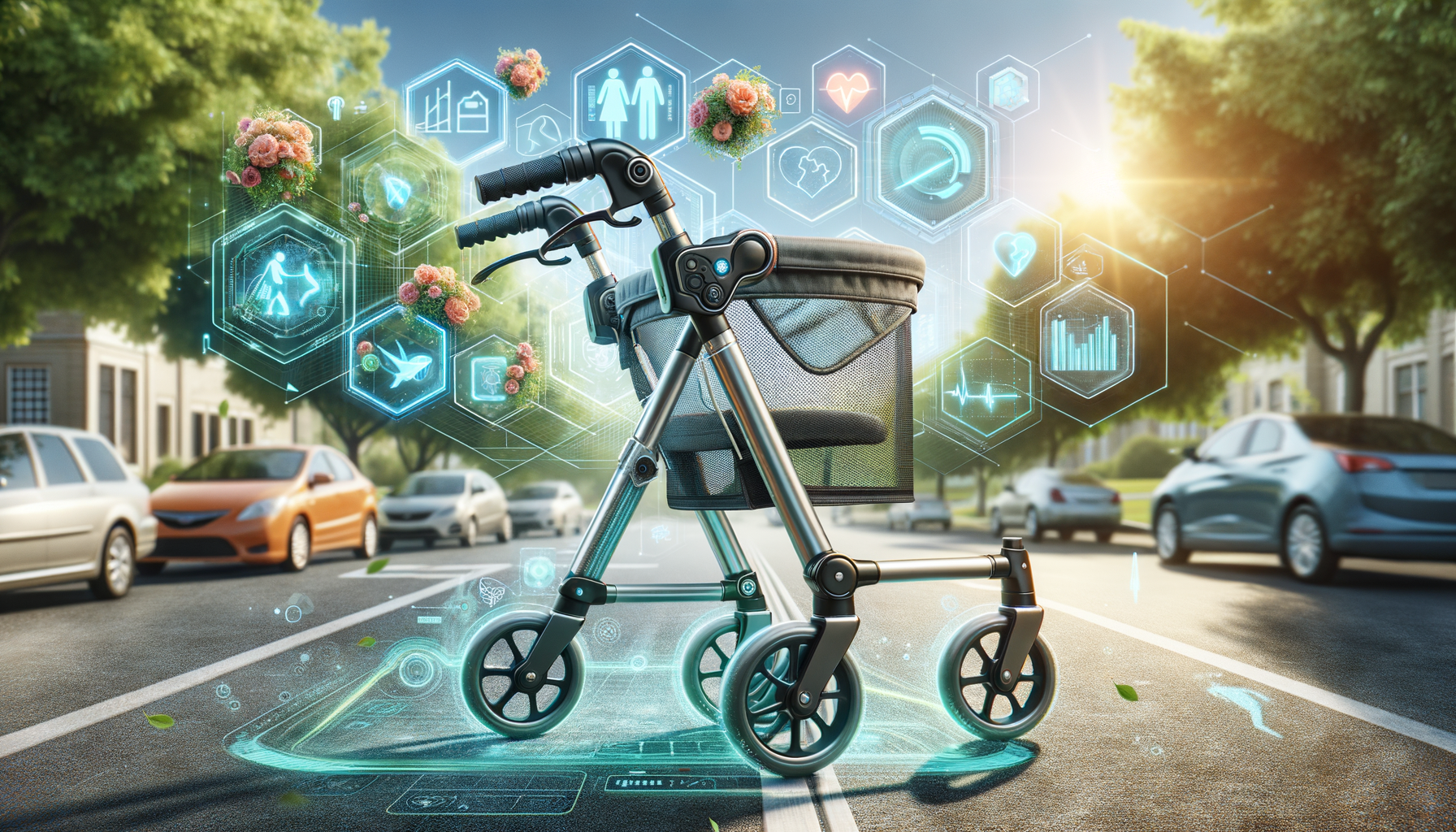
How Smart Rollators Are Evolving to Support Active Senior Lifestyles
Understanding Smart Rollators for Seniors
Smart rollators are a modern evolution of traditional rollators, designed to enhance mobility and independence for seniors. These devices incorporate advanced technology to offer features such as GPS tracking, fall detection, and health monitoring. The integration of these technologies aims to provide a safer and more efficient mobility aid for seniors, allowing them to navigate their environments with greater confidence.
Unlike traditional rollators, smart rollators often come equipped with sensors that can track a user’s movement patterns and provide real-time feedback. This data can be used to identify any irregularities in walking patterns, which can be crucial for early detection of potential health issues. Furthermore, some models are equipped with connectivity features that allow family members or caregivers to monitor the user’s location and health status remotely, adding an extra layer of security.
These advancements are particularly beneficial for seniors who wish to maintain their independence while ensuring their safety. By offering support and monitoring capabilities, smart rollators can help reduce the risk of falls, which are a leading cause of injury among the elderly. As the population ages, the demand for such innovative mobility aids is expected to grow, making smart rollators an essential tool for enhancing the quality of life for seniors.
Key Safety Features in Modern Rollators
Safety is a paramount concern when it comes to mobility aids, and modern rollators are designed with this in mind. One of the most significant safety features is the inclusion of ergonomic handles and brakes, which provide better control and reduce the risk of accidental slips or falls. These are particularly important for seniors who may have limited hand strength or dexterity.
Another critical safety feature is the stability provided by the rollator’s frame. Many modern rollators are constructed from lightweight yet durable materials, ensuring that they can support the user’s weight without being cumbersome. Additionally, the design often includes a wider wheelbase, which enhances stability and makes it easier to navigate uneven surfaces.
Some smart rollators also come with integrated lights and reflectors, improving visibility during low-light conditions. This is especially beneficial for seniors who may need to use their rollator in the early morning or evening. Furthermore, the addition of anti-tip features helps prevent the rollator from tipping over, providing an extra layer of security.
These safety enhancements are designed to provide peace of mind for both users and their families, ensuring that seniors can move about with confidence and reduced risk of injury.
The Benefits of Smart Mobility Aids
Smart mobility aids, including rollators, offer a range of benefits that go beyond traditional mobility solutions. One of the primary advantages is the ability to track and monitor health metrics such as heart rate, step count, and even oxygen levels. This data can be invaluable for healthcare providers, offering insights into a senior’s overall health and activity levels.
Moreover, the connectivity features of smart rollators enable real-time communication with caregivers or family members. This can be particularly reassuring for seniors who live alone, as it allows for quick assistance in case of emergencies. The ability to remotely monitor a senior’s location and movement patterns can also help prevent wandering, a common concern for those with cognitive impairments.
Smart rollators also promote independence by providing seniors with the confidence to move about freely. The enhanced safety features and real-time monitoring capabilities mean that users can enjoy greater freedom without compromising their safety. This independence is crucial for maintaining a high quality of life and can contribute to better mental and emotional well-being.
Overall, smart mobility aids represent a significant advancement in the field of assistive technology, offering numerous benefits that enhance both safety and independence for seniors.
Comparing Traditional vs. Smart Rollators
When comparing traditional rollators to their smart counterparts, several key differences become apparent. Traditional rollators are primarily designed for support and stability, with basic features such as brakes and a seat. While they are effective in providing mobility assistance, they lack the advanced features found in smart rollators.
Smart rollators, on the other hand, offer a range of technological enhancements that cater to modern needs. Features such as GPS tracking, health monitoring, and connectivity with mobile devices set them apart from traditional models. These capabilities not only improve safety but also provide valuable health insights and peace of mind for both users and caregivers.
Another difference lies in the user experience. Smart rollators often come with user-friendly interfaces and apps that allow for easy customization and monitoring. This makes them more adaptable to individual needs and preferences, offering a personalized mobility solution.
While traditional rollators remain a reliable choice for many seniors, those seeking additional safety and health monitoring features may find smart rollators to be a more suitable option. The decision ultimately depends on the user’s specific needs and lifestyle preferences.
Future Trends in Smart Mobility Aids for Seniors
The future of smart mobility aids is promising, with ongoing advancements in technology paving the way for even more innovative solutions. One trend is the development of AI-powered rollators that can learn and adapt to a user’s habits, offering personalized feedback and assistance. This could include automatic adjustments to speed or stability based on the user’s walking patterns.
Another exciting development is the integration of virtual reality (VR) and augmented reality (AR) into mobility aids. These technologies could provide immersive experiences that encourage physical activity and cognitive engagement, making mobility aids not just a tool for movement but also for overall well-being.
Additionally, as the Internet of Things (IoT) continues to expand, we can expect to see more interconnected devices that work seamlessly with smart rollators. This could include integration with smart home systems, allowing users to control their environment with ease.
As these trends continue to evolve, smart mobility aids are set to become an integral part of senior care, offering enhanced safety, independence, and quality of life.